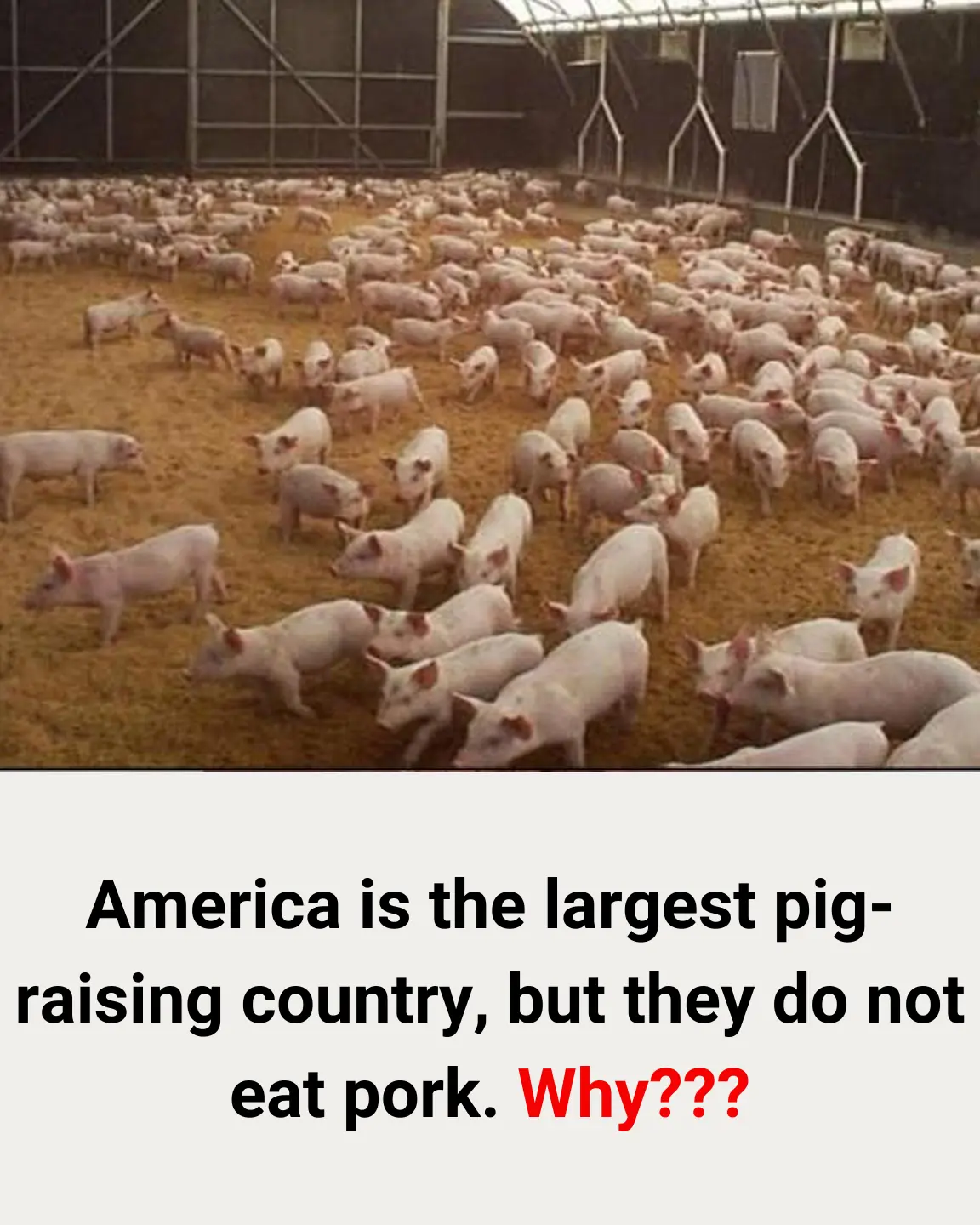
Why is that?

We all know that eating habits vary significantly across different countries. For example, we Asians prefer pork, while Europeans and Americans tend to enjoy beef more. The United States, however, raises a large number of pigs.
In fact, pig farming in the U.S. has its own advantages. We know that pig farming in our country primarily consists of small-scale operations, with most farms having less than 50 pigs, and the level of technology is not very advanced, relying mainly on manual labor, which increases the cost of raising pigs.
The U.S. has managed to achieve large-scale pig farming. Large-scale farming allows them to raise tens of thousands, or even hundreds of thousands, of pigs at the same time. This also gives them the bargaining power to negotiate feed prices with suppliers, thereby reducing feed costs. Large-scale pig farming also helps reduce management, sales, and production costs during the farming process.
Additionally, the U.S. is a major soybean-producing region. We know that soybeans are a high-quality feed, but the climate and management costs in our country make the production cost of soybeans relatively high. The large-scale agriculture in the U.S., along with favorable climate conditions, makes soybean prices lower. Lower soybean prices also provide them with an advantage in pig farming.
Moreover, labor costs are another factor. Since the U.S. operates large-scale pig farming, each worker can manage about 3,000 pigs.
Due to these advantages, pig farming in the U.S. is more cost-effective. As a result, American pigs have a significant competitive edge in the international market.
Why don’t Americans like to eat pork?
Although the U.S. excels in pig farming, they do not have a strong preference for pork. According to statistics, the U.S. consumes around 100 million pigs annually.
One reason why Americans don’t favor pork is that their cooking methods don’t bring out the delicious flavor of pork. Another reason is that pigs are considered invasive species, and there’s no tradition of eating pork locally. As a result, domestic demand for pork is not high. Moreover, the domestic market in the U.S. has become saturated, and the demand for pork has not increased in the last 20 years.
News in the same category


Grandma Saw the Sweater She Knitted for Her Granddaughter Donated and Decided It Was Time for a Talk About Appreciation

My Late Mom Left Me a Trust Fund, but My Dad Took Money from It for His Stepdaughter — I Finally Retaliated

My Husband Made Me Sell My Apartment to Pay Off His 'Business Debts' After Being 'Dumped' by His Partner — But It All Turned Out to Be a Lie

My Landlord Raised My Rent Because I Got a Promotion — Big Mistake Messing With a Single Working Mom of Three

All the Guests Brought Black Gifts to My Birthday Party — If Only I Knew What Was Coming

Cleaner Stepped Into a Stranger’s Home

My Mom Avoided Me for Years

My Best Friend Asked Me to Watch Her Kids for an Hour – I Didn't See Her Again for 7 Years

My Husband Had Been Secretly Transferring Money from Our Joint Account to My Best Friend for Months

What’s The Purpose Of The Fabric Strip Across Hotel Beds

How dare you even touch the patient

My mother-in-law, who works with me, humiliated me in front of the entire office

The experienced doctor was only hired as a nurse after prison

She hadn’t even managed to say “I do!” at the registry office

Her mother-in-law opened the box, peered inside, and blushed

Quiet Ksyusha told all her husband’s relatives off with a few choice words

After the betrayal by his wife and his so-called friends

So, according to you, is it normal to rummage through a purse

Mom, you’re just a pauper!» Pashka shouted, slamming the door of his room.
News Post

Silent Symptoms of Anemia You Should Never Ignore

One powerful vitamin that could end your tinnitus for good!

Remove Blackheads On Your Nose

Silent Symptoms of Anemia You Should Never Ignore

What Is The Normal Blood Pressure For Each Age

Objects People Were Confused About Their Purpose

You Should Never Use Self-Checkout At The Store

10 Signs You’re Eating Too Much Sugar

What your doctor’s not telling you about statins will shock you

The natural kitchen mix people use to break down stubborn plaque buildup

The 10 biggest eye health myths people still believe (an ophthalmologist explains)

Why doctors are rethinking blood pressure targets (and what it means for you)

The #1 cheap food packed with natural probiotics (and how to prepare it)

The real reason migraines are so much more than “just a headache”

Add Salt and Lemon to Your Bath Water — The Result Will Shock You

Hidden in Your Backyard: The Simple Leaf That Unlocks Thicker, Faster Hair Growth

Revive Your Prostate with Onion & Onion Skins: The Miracle Grandma’s Tea You Never Expected

Robot 'Kidnaps' Fellow Machines at Shanghai Exhibition, Sparking Debate on AI Autonomy and Labor Rights

Introducing the U-Hawk: The Autonomous Black Hawk Revolutionizing Heavy-Lift Aviation
